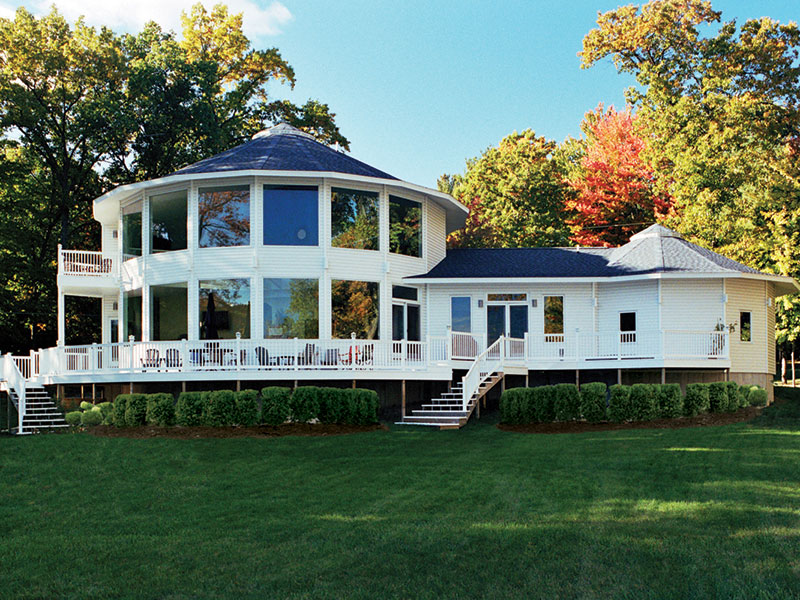Sustainable Home Innovations: Low-Impact Living Solutions

Introduction: Navigating the Path to Low-Impact Living
Embracing low-impact home innovations is a pivotal step toward sustainable living. In this article, we delve into a spectrum of eco-friendly solutions and innovations that empower homeowners to reduce their environmental footprint while creating a comfortable and efficient living space.
Energy-Efficient Home Design: The Foundation of Low-Impact Living
At the core of low-impact home innovations lies energy-efficient design. This approach involves creating homes that harness natural light, optimize insulation, and integrate renewable energy sources. From passive solar design to the use of energy-efficient appliances, the goal is to minimize energy consumption and, in turn, reduce environmental impact.
Solar Power Integration: Harnessing Renewable Energy
One of the most impactful low-impact innovations is the integration of solar power. Installing solar panels on rooftops allows homeowners to generate their own clean energy, reducing reliance on traditional power sources. Advances in solar technology make this solution more accessible and cost-effective, contributing to a sustainable energy future.
Smart Home Technologies: Optimizing Resource Use
In the era of smart homes, technology plays a crucial role in low-impact living. Smart thermostats, lighting systems, and home automation allow for optimized resource use. These technologies enable homeowners to monitor and control energy consumption, reducing waste and contributing to a more sustainable lifestyle.
Water Conservation Strategies: From Rain Barrels to Greywater Systems
Low-impact home innovations extend to water conservation strategies. Implementing rain barrels for harvesting rainwater, installing low-flow fixtures, and incorporating greywater systems for recycling water from sinks and showers are effective ways to reduce water consumption. These innovations align with sustainable practices for responsible water management.
Green Building Materials: Eco-Friendly Construction Choices
Choosing green building materials is a fundamental aspect of low-impact home innovations. From recycled wood and reclaimed materials to sustainable bamboo and cork, eco-friendly choices minimize the environmental impact of construction. These materials contribute to healthier indoor air quality and support responsible sourcing practices.
Natural Ventilation and Passive Cooling: Enhancing Comfort Naturally
Innovations in natural ventilation and passive cooling methods contribute to low-impact living. Strategic design elements, such as well-placed windows, cross-ventilation systems, and thermal mass, enhance indoor comfort without relying heavily on energy-intensive air conditioning. This approach prioritizes a connection with nature and minimizes reliance on mechanical cooling.
Green Roof and Vertical Garden Solutions: Bringing Nature Home
Green roofs and vertical gardens are innovative solutions that bring nature into urban living spaces. These features enhance insulation, absorb rainwater, and create habitats for biodiversity. Implementing green roof and vertical garden solutions not only adds aesthetic appeal but also contributes to a healthier urban ecosystem.
Minimalist Design and Sustainable Furnishings: Less is More
A minimalist design approach and sustainable furnishings characterize low-impact home innovations. Choosing quality over quantity, selecting furniture made from eco-friendly materials, and opting for second-hand or upcycled items align with the principles of mindful consumption. Minimalist design encourages a clutter-free environment and reduces the need for excessive resources.
Waste Reduction Practices: Embracing a Circular Economy
Low-impact living includes embracing waste reduction practices and fostering a circular economy. Implementing recycling systems, composting organic waste, and choosing products with minimal packaging are steps toward reducing household waste. These practices contribute to a more sustainable and eco-conscious lifestyle.
Conclusion: Paving the Way for a Sustainable Future
In conclusion, low-impact home innovations are a roadmap to a sustainable future. From energy-efficient design and solar power integration to water conservation, green building materials, and waste reduction practices, homeowners have a plethora of options to minimize their environmental footprint. By adopting these innovations, individuals contribute to a global movement toward a more sustainable and resilient world.
Explore more about Low-Impact Home Innovations at jetdesignhome.my.id.









